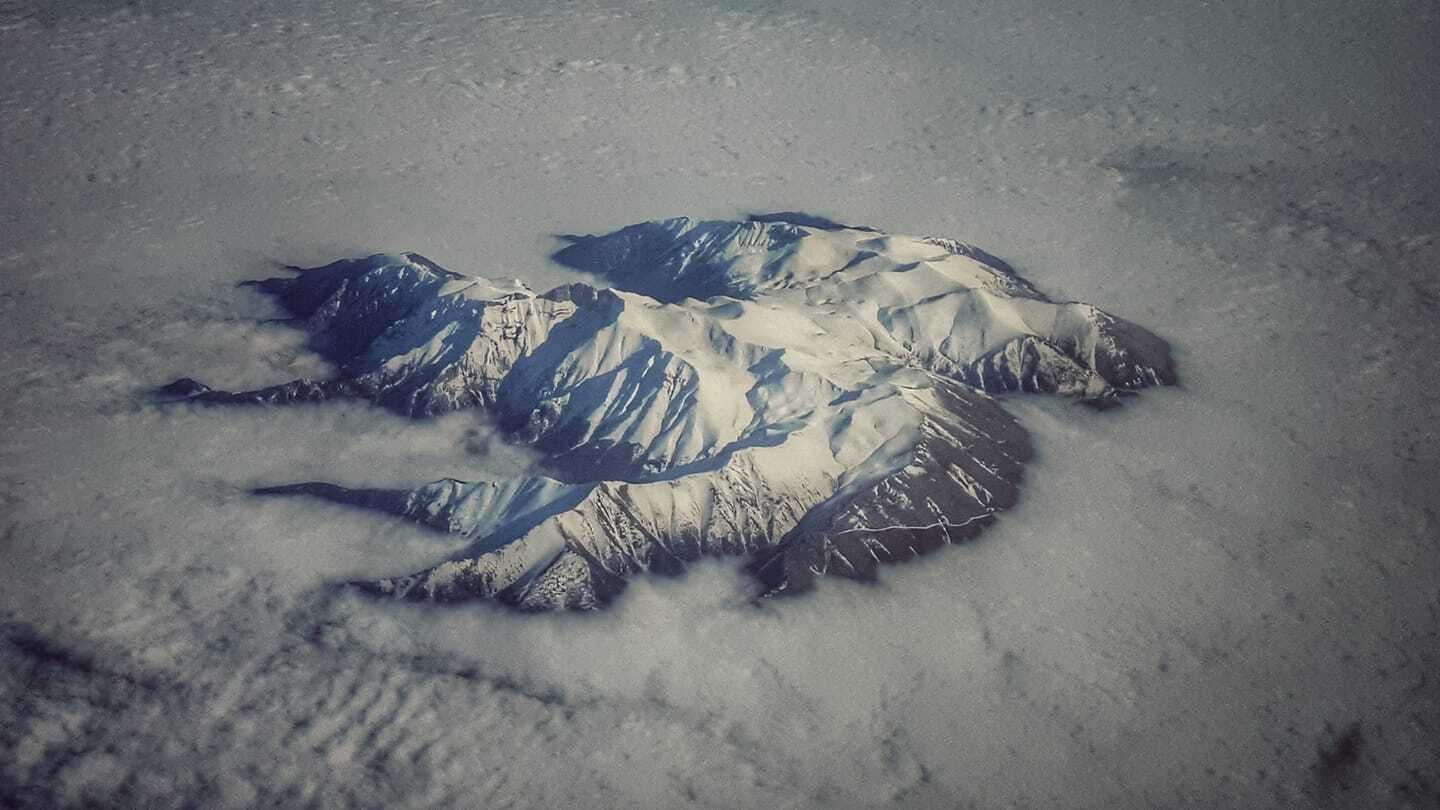Mount Olympus isn't just Greece's highest mountain; it's also a place full of myths and history. Today, it draws climbers and adventurers from all over the world, offering more than just physical challenges—it's a journey filled with the presence of ancient Greek gods.
Mount Olympus boasts 52 peaks, deep gorges, and a main plateau around 2700 meters high. The three primary peaks are Mytikas (West Peak), Skolio (Middle Peak), and Stefani (East Peak). Climbing to Mytikas, the highest point, is tough due to its Class 3 difficulty—expect a challenging climb with loose rocks on steep slopes. However, the lower peaks like Skolio are more accessible to a wider range of hikers and climbers.
💡 Every year, about 10,000 people climb Mount Olympus, with most reaching only the Skolio summit.
The climb usually starts from Litochoro, known as the "City of Gods," located at the mountain's base. The hike to Mytikas involves a demanding rock scramble toward the end.
The third highest peak, Agios Antonios, once housed a sanctuary dedicated to Zeus, confirmed by archaeological discoveries in 1961. The summit of Olympus was first successfully reached in 1913 by Swiss climbers Frédéric Boissonnas and Daniel Baud-Bovy, helped by local hunter and guide Christos Kakkalos, who later became the official guide for Olympus and contributed significantly to exploring and mapping the mountain.
Chapter 1: Climbing Mt. Olympus: Mountaineering Or Hiking?
Mount Olympus, the legendary home of the Greek gods, is deeply significant in Greek mythology and culture. This chapter explores whether it's more suitable to hike or mountaineer to reach the top, providing insights into the various routes to the peaks, and identifying the most accessible ways for both beginner and advanced climbers.
Understanding the Challenge: Beginners VS. Advanced
Mount Olympus is a beacon for both experienced mountaineers and enthusiastic beginner hikers.
For newcomers or those who prefer easier climbs, the journey to Skala peak is ideal. At 2882 meters, situated between Mytikas and Skolio Peak, Skala offers incredible high-altitude views without the need for technical climbing skills. If you're not confident in your abilities, you can always opt for guided tours and guiding services.
On the other hand, the route to Mytikas Peak involves diverse landscapes, culminating in the 'Louki' route—a technical scramble of Third-class climbing. This route demands good physical condition, careful foot placement, and a head for heights, making it suitable mainly for those with mountaineering experience.
Can a Beginner Hiker climb Mount Olympus?
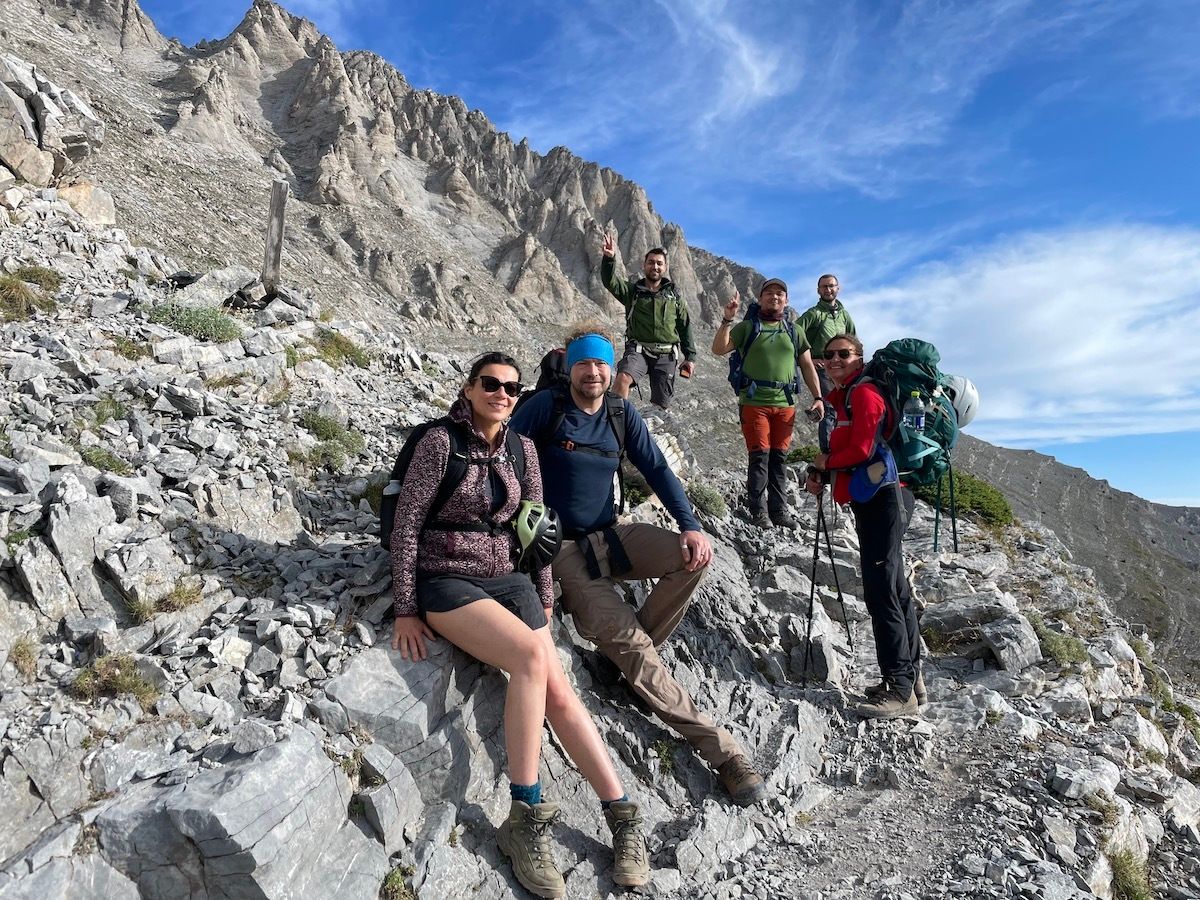
The climb to Mount Olympus's summit is accessible to tourists, and while beginners might manage the Skala route, Mytikas peak itself is better suited for more experienced climbers—or beginners accompanied by a certified guide.
The cost of climbing can vary but typically includes the guiding fee, gear rental, and accommodation in mountain refuges. It's important for visitors to budget accordingly and ensure they have sufficient resources for a safe and enjoyable expedition.
Beginners: Most Accessible Routes to the Summit
A climb on Mount Olympus can start with the E4 trail from the Prionia parking area to the first mountain refuge, Spilios Agapitos. This initial hike takes about 3 hours and is straightforward, with no technical challenges. The route continues to the summits of Skala Peak (2,882m) and Skolio Peak (2,911m) without technical difficulties.
However, the next section from Skala Peak to Mytikas Peak (2,918m) involves a YDS Class III rock scramble, which is more complex and can be daunting due to steep drops. For those hesitant about the scramble, an easier alternative is to follow a narrow ridge line to Skolio Peak, which is a popular choice for many. Typically, this climb spans two days, including an overnight stay at a mountain refuge to break up the journey and allow for acclimatization.
💡 This is the quickest and most straightforward route, taking about 5 to 7 hours to ascend and 4 hours to descend, covering a distance of 9.6 km with an elevation gain of 1,928 meters. It's a good option for beginners who are fit and have some hiking experience.
The Spilios Agapitos Refuge offers rest and shelter, strategically placed for climbers to tackle the summit push on the second day. The total hiking time can vary but generally spans two days with an overnight stop.
For the more adventurous, the trek to Mytikas peak is a true challenge. It involves climbing steep rocks where you'll need to use both hands and feet to navigate. This route takes you on paths believed to have been walked by the gods, offering a thrilling and fulfilling experience. Let’s have a closer look.
Best Routes for Advanced Climbers to Summit of Mt. Olympus
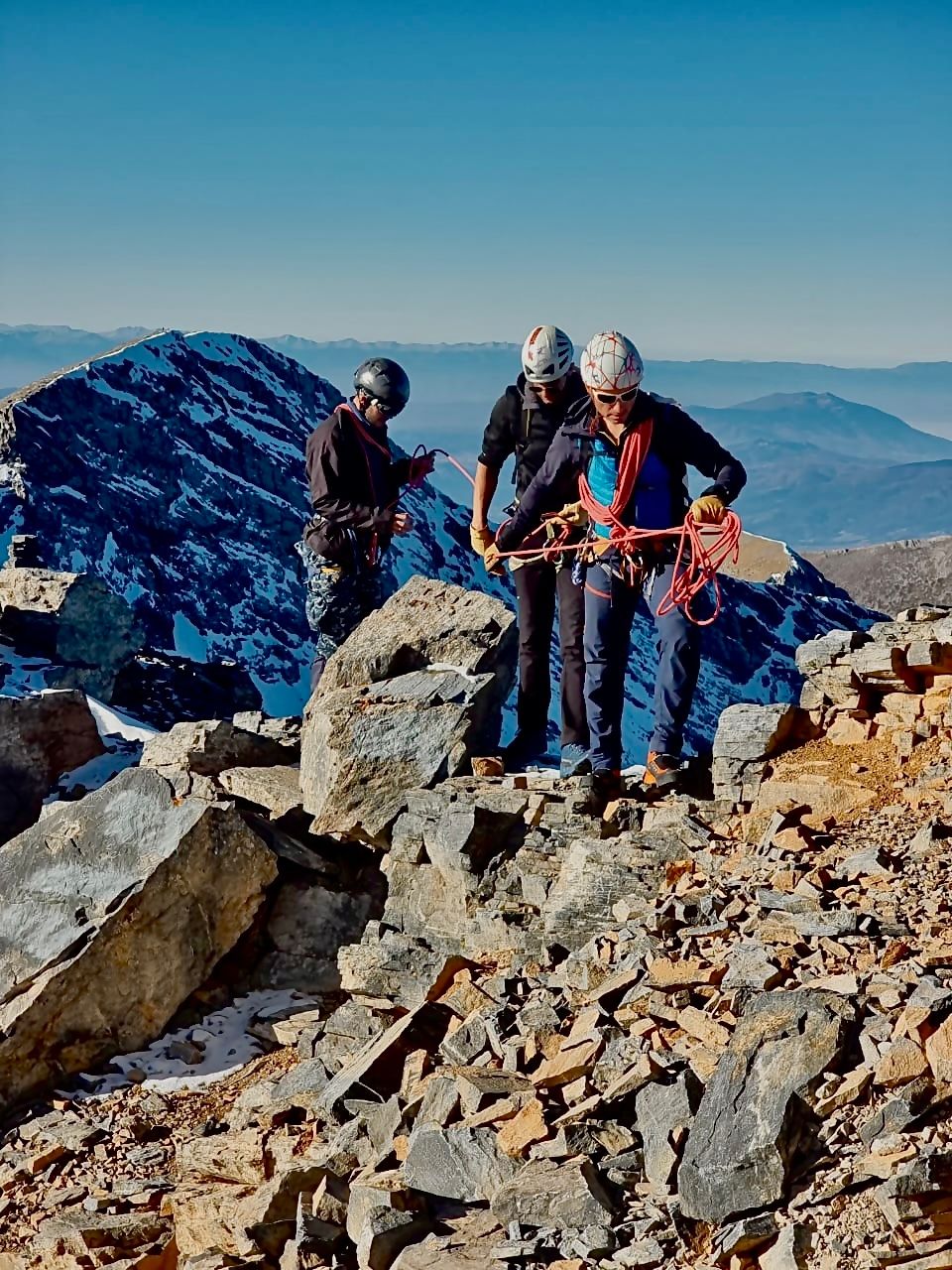
Mount Olympus is a favorite spot for skilled climbers, offering several tough paths. If you’re one of them, here are a few options for those looking for an advanced climbing challenge:
Olympus/Blue Glacier (2,429 meters / 7,965 ft) - This challenging 71-kilometer (44-mile) round trip includes a climb of 2,256 meters (7,400 feet) in elevation. It's classified as a Basic Glacier Climb. The route involves a direct climb up mostly solid rock for about 15 meters to the summit, with some sections rated Class 5.3-5.4. You can use 3-4 small to medium cams for protection. You can check out the route here.
The Three Peaks Challenge: Climb the highest points of the mountain of the Gods in one day - This Challenge is a demanding adventure for mountaineers who wish to summit the three highest peaks of the mountain in a single push. These peaks are Mytikas, Skolio, and Stefani, which are also known as the throne of Zeus, the second highest, and the most inaccessible peak, respectively. The typical route for this challenge starts from the Gortsia parking area and heads up to the Muses Plateau, where climbers can rest at one of the mountain refuges. From this strategic base, participants tackle each peak, dealing with varying degrees of technical difficulty.
Chapter 2: How Much Does Hiking Mount Olympus Cost?
The cost of a 2-day trip to climb Mount Olympus varies depending on whether you have a guide.
If you hire a guide, the price could range from €600 to €1,400 per person. This usually covers:
The guide's fee
Use of necessary climbing gear
The cost of staying overnight
The entrance fee for the National Park
Other additional costs
However, climbers need to bring their own clothing suitable for mountain climbing, camping equipment, boots, food and water for the hike, and water filtration systems. Also, you should budget for meals and drinks at the mountain hut for both yourself and the guide.
If you go without a guide, the costs are much lower. You only need to cover your transport, any fees, parking, and staying in a mountain refuge. Without a guide, the total cost generally doesn't exceed €200-300.
💡 Another option is to join a Group trip and share costs of your adventure with the other participants: this will allow you to rely on a professional guiding service, meet other outdoor enthusiasts, and get rid of the hassle of taking care of the logistics. For example, Mapo Tapo‘s 3-day trip to Mytikas Peak on Mount Olympus comes to a price of 330€ per participant.
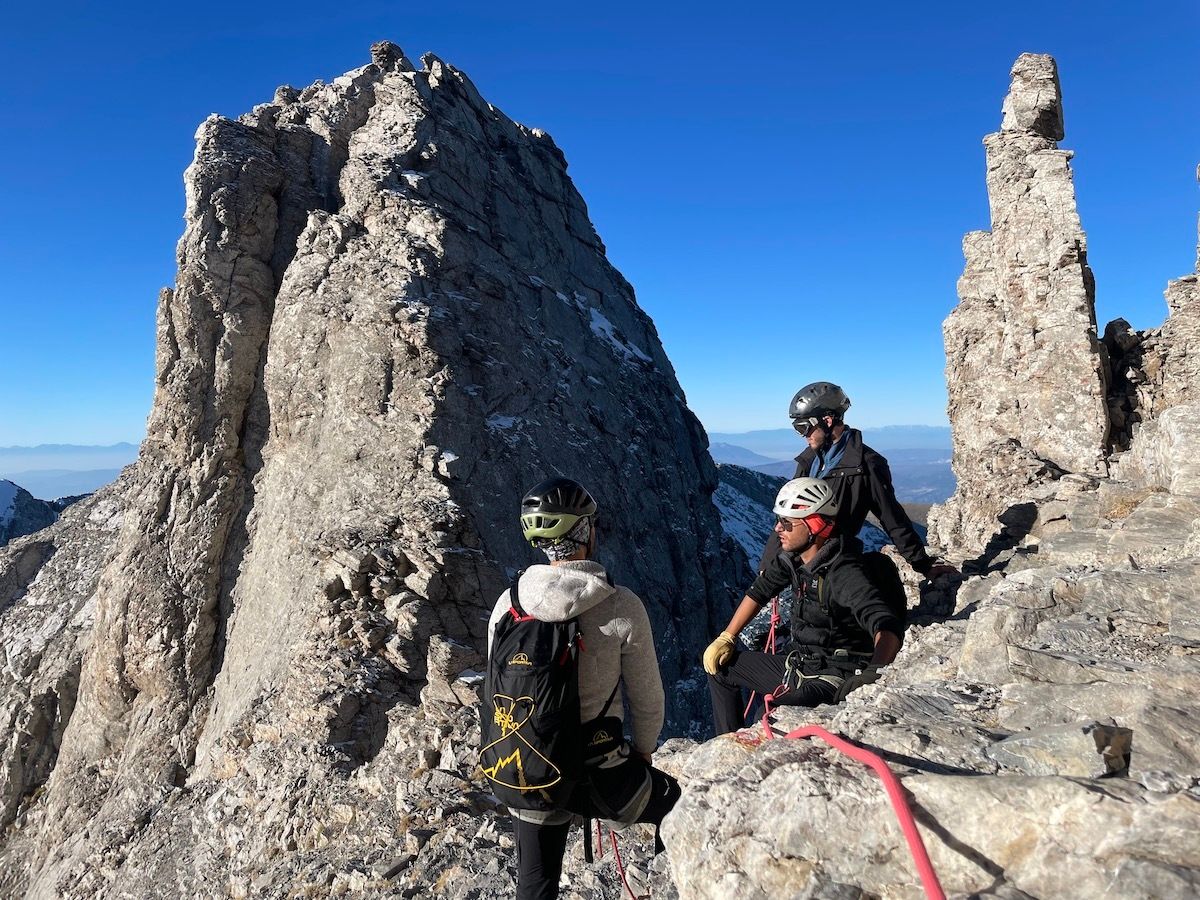
Note that the price for staying in a mountain refuge ranges from €15 to €30 per person each night, depending on the specific refuge and time of year. Transportation costs can also vary based on your mode of transport and the distance traveled, like a taxi ride from Litochoro to Prionia which costs about €30 one way.
Item | Cost without guide | Cost with guide |
|---|---|---|
Transportation (taxi, bus, etc.) | €30-€50 per person | Included in guided tour |
National Park Fees | €10-€20 per person | €10-€20 per person |
Parking fees | €5-€10 per vehicle | Included in guided tour |
Guiding fees | N/A | $600-1,395 per person |
Gear rental | €30-€50 per person | Included in guided tour |
Accommodation in a refuge (1 night) | €18-€30 per person | €18-€30 per person |
Chapter 3: How To Plan Your Adventure To Mount Olympus
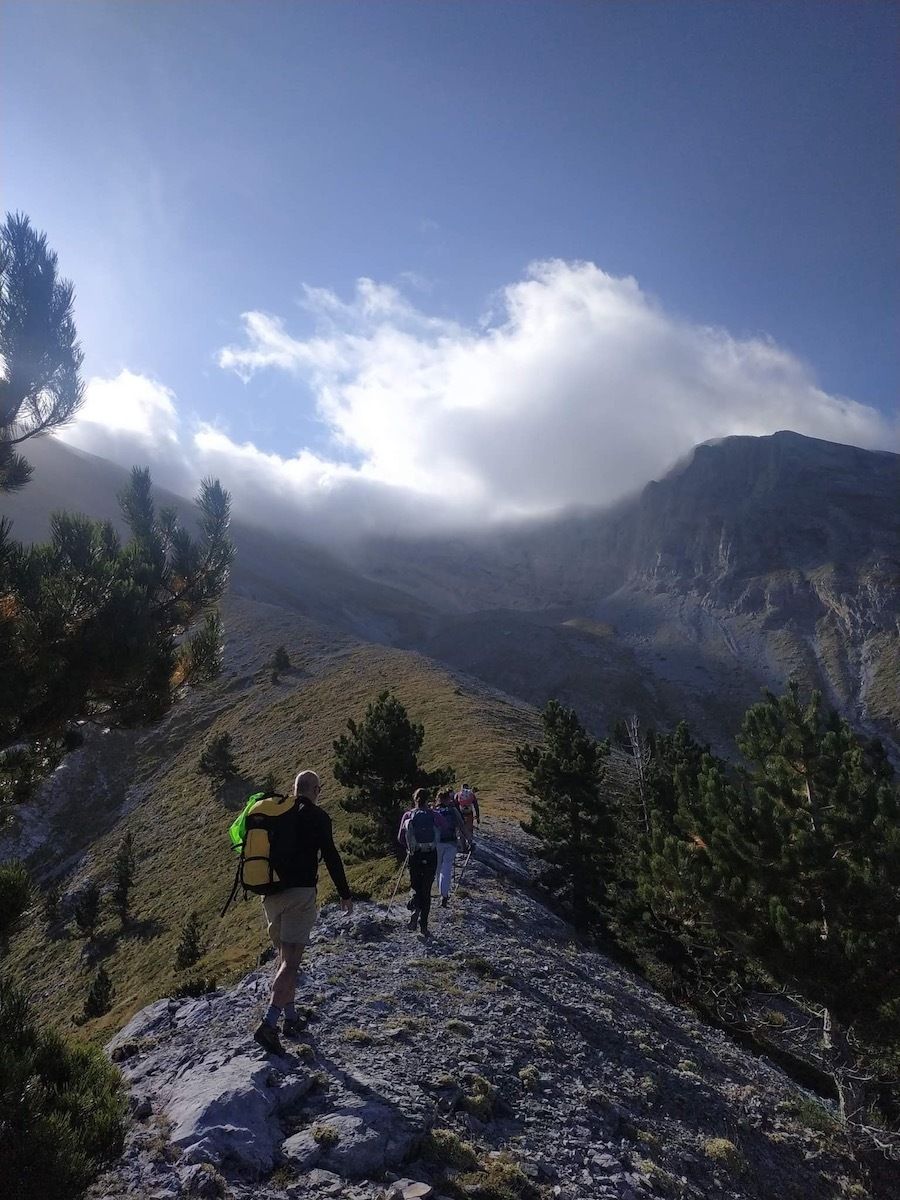
Most affordable way to reach the starting point of Mount Olympus
From EU
To reach Litochoro Village, the starting point for climbing Mount Olympus, you first need to fly to Thessaloniki Airport in Greece from cities like Milan or New York. From Thessaloniki, you can either take a bus or a taxi to Litochoro.
The cost of a one-way flight from Milan to Thessaloniki ranges from €130 to €170, depending on the airline and the season. Once in Thessaloniki, you can choose between:
Bus: A round-trip bus ticket costs about €16.50 and the ride takes around 2 hours.
Taxi or Car Rental: While more convenient, these options are more expensive. Renting a car for a day costs about €27, not including fuel or parking fees.
Item | Cost without guide | Cost with guide |
|---|---|---|
Transportation (taxi, bus, etc.) | €30-€50 per person | Included in guided tour |
National Park Fees | €10-€20 per person | €10-€20 per person |
Parking fees | €5-€10 per vehicle | Included in guided tour |
Guiding fees | N/A | $600-1,395 per person |
Gear rental | €30-€50 per person | Included in guided tour |
Accommodation in a refuge (1 night) | €18-€30 per person | €18-€30 per person |
From outside EU
For travelers from outside the EU, like from New York, the costs vary significantly. A round-trip flight from New York to Thessaloniki generally costs between €558 and €744.
Once you land in Thessaloniki, continue to Litochoro by bus, taxi, car, or shuttle.
The total estimated cost for a round trip from New York to Litochoro, including flight and bus tickets, ranges from approximately €591 to €777. Always check different airlines and bus companies for the most current and accurate rates.
Transport Mode | Cost Estimate | Notes |
|---|---|---|
Flight (Milan to Thessaloniki) | €130-€170 (one-way) | Prices vary by airline and season. |
Bus (Thessaloniki to Litochoro) | €33 (round-trip) | Journey takes about 2 hours. |
Taxi/Car Rental | €27.00/day (not including gas or parking) | More convenient, but more expensive. |
Total Cost (round-trip) | €260-€340 | Includes flight, bus, and other expenses. |
What to do when arriving at Litochoro Village?
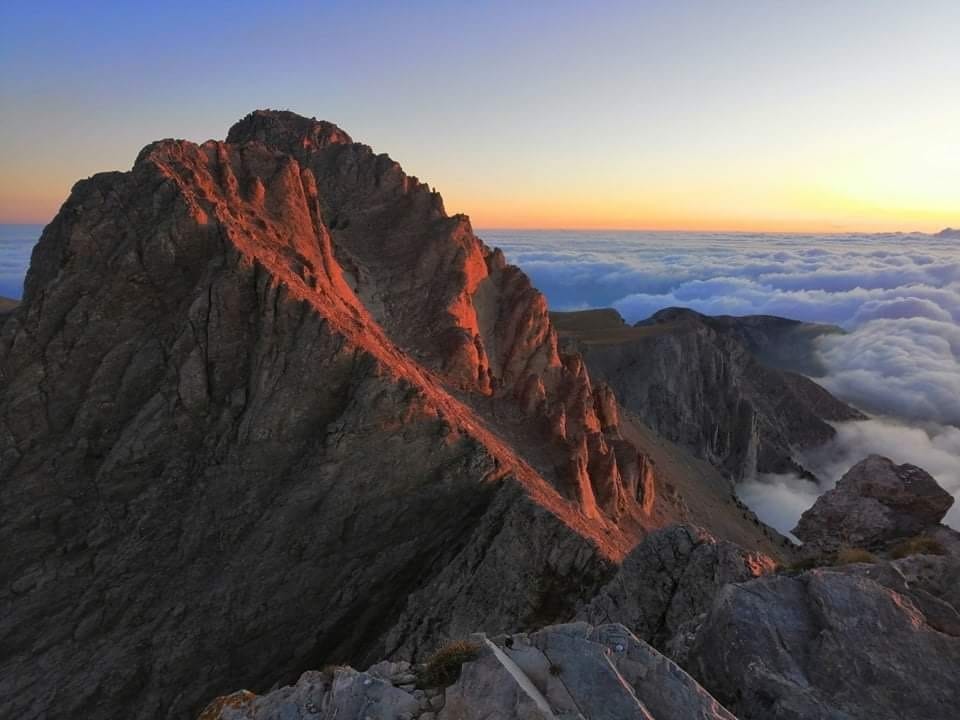
Climbing Mount Olympus from Litochoro is tough, adding about 6 hours of walking to reach the Prionia parking area, where the main trail starts. The entire climb usually takes about 12 hours to ascend and 9 hours to descend.
Since a direct hike to Mytikas from Litochoro in one day is quite challenging, you have two main options:
Split the hike over two days: Stay overnight at either Refuge A Spilios Agapitos (2,100 meters) or Refuge C Kakalos (2,700 meters).
Start from a higher point: Drive to Prionia (1,100 meters) to begin your hike, which reduces the distance you need to walk.
Here's a breakdown of the typical journey segments from Litochoro to Mytikas:
Litochoro (300 meters) to Prionia (1,100 meters): About 6 hours; 10 km with a climb of 1,275 meters up and 468 meters down.
Prionia (1,100 meters) to Refuge A "Spilios Agapitos" (2,100 meters): About 3 hours; 6.5 km with an ascent of 1,071 meters and a descent of 127 meters.
Refuge A "Spilios Agapitos" (2,100 meters) to Skala Peak (2,882 meters): About 2.5 hours; 2.5 km, climbing 866 meters.
Skala Peak (2,882 meters) to Mytikas (2,918 meters): About 1 hour; 400 meters, with an elevation gain of 98 meters and a drop of 69 meters.
These details provide a clear idea of what to expect if you're planning to tackle Mount Olympus, helping you prepare adequately for this significant adventure.
Chapter 4: Things To Know Before Climbing Mt. Olympus Greece

Climbing Season: The best time to climb Mount Olympus is from June to October. In June, you might still find some snow on the paths, so the safest route to take is from Refuge A to Scala and then on to Mytikas. This is especially true if you're not prepared for snow and ice. Also, early summer often brings lightning storms, and you might even see some snowfall as late as September or October.
Skills Needed: You don't need to be an expert climber for this mountain, but you should be ready to change your plans if the weather gets bad. Depending on the trail conditions, you might also need to use safety equipment like belaying devices, and you'll find bolts in the rock to help with this. It's important to remember that other climbers can be unpredictable, just like the weather, so always be careful.
💡 You can climb Mount Olympus in one day if you are fit! If you are ready for a 10-hours hike of around 20 km with at least 2200 meters of elevation gain.
Weather Conditions: Even during the summer, it can get really cold at night on Mount Olympus, so make sure to bring warm jackets and thermal clothing. Also, it's good to know that not everyone who claims to be a mountain guide really is one, so always check their credentials. Most people climb to Mytikas without a professional guide, but remember, the challenge is often more mental than physical due to the high altitudes.
Mountain Refuges: There are eight refuges on Mount Olympus, placed along the main routes up the mountain. These refuges are usually open all year, but you need to book your spot ahead of time. The three most popular ones are Spilios Agapitos (Zolotas) Refuge, Giosos Apostolidis Refuge, and Christos Kakkalos Refuge, known for being great places to rest. The other five refuges are sorted by their altitude on the mountain. You can book and find out where these refuges are located here.

